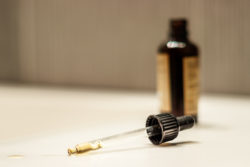My Tincture Is 2%. How Much CBD Is in the Bottle?
By Dylan Wilks, CTO
It’s always great to have data on your product, but that data is pretty useless if you can’t put it to practical use. Potency calculations seem simple at first glance, but they can get complicated quickly. This is especially true for tinctures, where the percent weight doesn’t easily translate to an understandable dosage. Let’s say your lab or LightLab reports 2% CBD in your tincture; how does that translate to milligrams CBD per bottle? Let’s break down how to use potency data for tinctures. To do this, you only need 3 things:

-
The total milliliters of sample in your bottle
-
The weight percent of the sample from a LightLab or lab report
-
The carrier solution of your tincture (for example MCT oil or ethanol)
Let’s use an example with real world numbers in order to figure this out. We will assume that our bottle contains 30ml of sample, and that you’ve run a sample on your LightLab and got 2% for the CBD content. At first blush this seems like an “easy” math problem (sorry, this article was written by an engineer). If the solution is 2% CBD, and there’s 30ml total in the bottle, so that should give you 2% x 30= 0.6g of CBD, or 600mg CBD. But wait, we are missing something here! The bottle is 30ml, and typical LightLab and laboratory results give you “weight percent”. Milliliter is a unit of volume. Don’t give up, we are almost there…
What we need to know is the density. In other words, how many grams does each milliliter weigh? There’s two ways to get this information.
-
The Easy Way – The easy way is to simply look up the density online. MCT oil has a density very close to 1g/ml. Ethanol is 0.8g/ml.
-
The Hard Way – The hard way is to weigh a sample. If you were to weigh 1ml of your solution, the weight that you get will give you the density. In other words, if I weighed out 1ml of ethanol tincture, I should find it is very close to 0.8g.
Armed with the density, we can now finish our job and stop thinking about math for a while. Let’s do this in two steps:
-
Get the total grams in your bottle by multiplying the density by the total volume. In the case of MCT oil, this would be 1g/ml x 30ml=30g. For ethanol, we would get 0.8g/ml x 30ml= 24g.
-
Get the total amount of CBD in your bottle by multiplying the test result times the total grams calculated above. For the MCT oil, this would be 2% x 30g=0.6g, or 600mg. For ethanol, this would be 2% x 24g=.48g or 480mg.
It’s interesting to note that the ethanol tincture in this case would have less total CBD in the bottle at the same percent weight of CBD. If the bottle was advertised at 500mg per bottle, the ethanol tincture is short 20mg, and the MCT tincture was over by 100mg.

In summary, it really only takes 3 pieces of information to go from test result to bottled CBD content. With a LightLab and a few of minutes of time you can easily determine whether your tincture process matches expectations; no math degree required.
